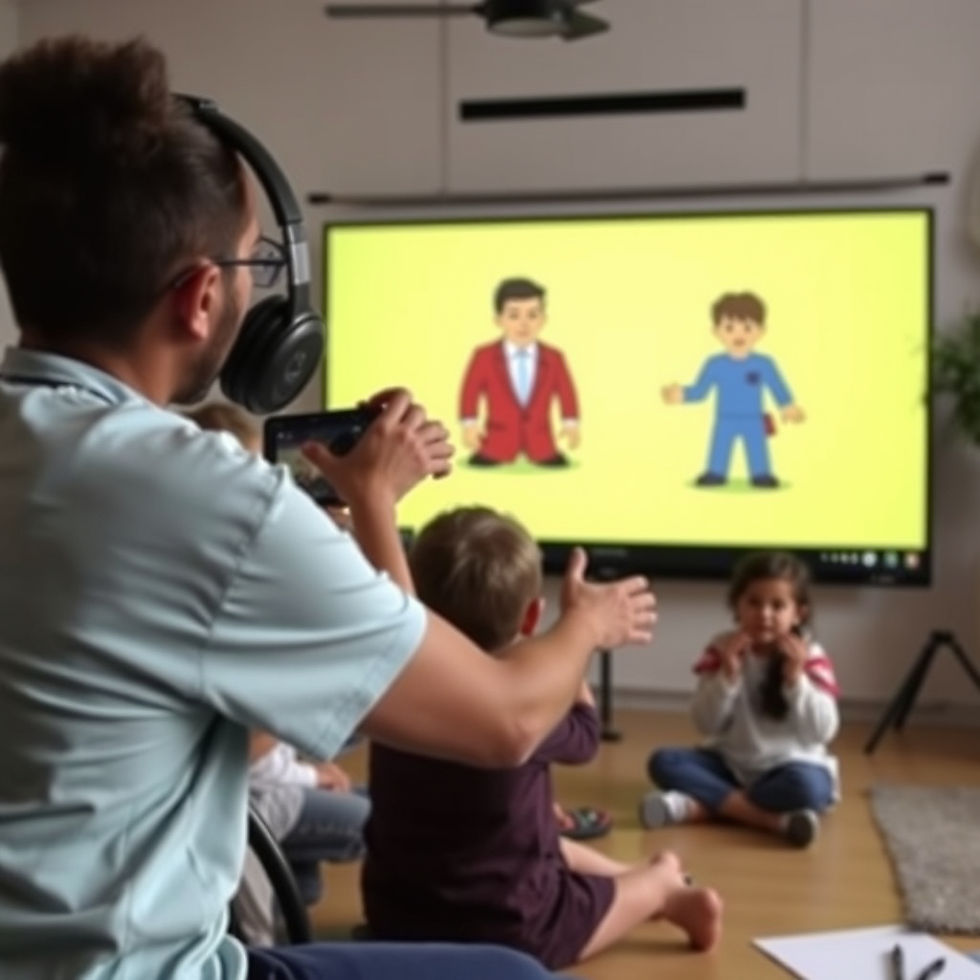What is Video Modelling-Good teaching practices in teaching autistic children.
- Rosalie
- Sep 22, 2015
- 3 min read
Updated: Aug 7

Why video modeling is used
When discussing best teaching practices in autism, we know that many autistic children learn by repetition and have excellent visual skills. All children learn through modelling and this is especially true of children with autism. Video modelling was developed to provide another strategy that teachers can use in their everyday practices.
Video modeling is an effective evidence-based intervention you can use in the classroom to develop a wide range of skills. It can be used for social skills development, communication, play, self-help, and vocational skills. The students learn by observing and imitating the modeled behaviours. As many students enjoy screen time, it is very effective as they are less likely to be distracted.
If is less demanding for the students as they are not required to continually respond to an adult.
Many autistic students are obsessed with trains but, in the early stages of play, they will often line parts into a single file. Video modelling is perfect for demonstrating different play situations that can be engaged in.
Look at the communication opportunities of toys with accessories. You can see the possibilities for requesting and language modelling with this train set here
* as an Amazon affiliate, I earn from qualifying purchases.
Whenever I make something in art, I usually model it first, then provide the necessary supports for each child e.g. a visual schedule to follow, some of the activity partly done, sentences to paste next to the correct picture or in the correct order of procedure, etc.
I also model music activities, maths. activities and skills, play skills, correct speech patterns, reading aloud, and so it goes...............
Children with autism need modelling and it may need to be repeated a number of times. Video modelling helps provide modelling of many skills and helps children become successful in a variety of skills which are practised over a time until they become familiar with the skill. It may be used to teach children how to wash their hands, play a particular imaginative game or how to greet people. You can buy commercial products, find something on youtube or make your own video with team members.

Videos can teach children how to turn-take when doing construction activities. You can also find or make videos on how to use the toilet, how to wash your hands, how to travel on public transport, movement and actions to music and how to play specific games.
The benefits of video modelling
I think the value of video modelling is: the videos can be highly motivating and the children need to generalise skills and it becomes another means of them accessing skills.
Video modeling can be a highly personalised strategy that inidividualises an approach to developing a skill for one particular student. It, therefore, pays the utmost respect for a student's IEP.
I recommend Chatter Blocks videos to engage autistic children in the classroom program. Look for Chatter Blocks Videos for Kids with Autism. They are great and very engaging. You can include communication skills, such a pictures for positional language and different actions, and turn-taking for talking and singing. A favourite of mine is
If you want to see the selection of my posts, you can go to Home Page by clicking the button
Recommended reading:
The following range of topics are included:
support services
assistive technology
collaborating with parents
and intervention strategies
helping students with ASD interact with their peers and develop independence.
For more information here.
This highly practical resource book has been written for teachers in both primary and secondary settings who want realistic and achievable strategies to support students in a range of situations and minimize the possibility of disruptive challenges in the mainstream classroom.
Key features include:
Practical and achievable strategies
Real-life scenarios to problem-solving
Memorable mantras and quick quotes
Photocopiable and downloadable resource sheets
This book will be an invaluable tool for both primary
For more information about this book, read it here






















Comments